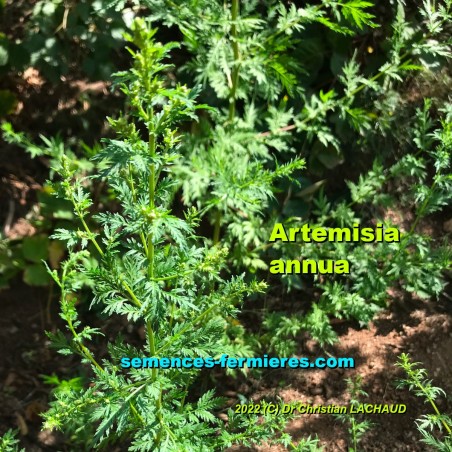





Artemisia annua - Sweet Sagewort
1 packet of 50 seeds
-
Artemisia (derived from the name Artemis, Olympian goddess) is a botanical genus of Eurasian origin containing more than 500 species, some of which are common in Western Europe (among the best known: Absinthe, Tarragon, Genépi)
Sweet Sagewort is a fast growing herbaceous plant with tender leaves, fresh green in color, very indented, and extremely aromatic (camphoric, fresh, resinous aromas, with a touch of acidity)
During Summer, Annual Mugwort branches out in its upper part and produces light inflorescences gathering many small, yellow-green pompom-like flower heads
The tiny seeds (achenes) ripen in the Fall
Artemisia annua is used as :
The medicinal properties of Annual Mugwort are linked to several active ingredients, including Artemisinin, which gives it its Antimalarial and Antiviral properties
Chinese Absinthe is :
Its leaves are harvested in Summer, just before the plant blooms, and dried in the shade
They are used later as herbal tea (internal use), or applied locally as compresses on infected wounds, skin infections, boils etc (external use)
WARNING ! Medicinal use is not recommended for :
-
Sow Annual Wormwood in spring in pots by pressing a few seeds on a damp soil
Keep moist, exposed to the sun, sheltered
After germination, select the most vigorous plant per pot
Cultivate a few weeks until the plants can be transplanted outside, after the last frosts
Choose a sunny position, sheltered from the winds
The type of soil does not matter, but the plant will grow better if the soil is fertilized and stays fresh in Summer
CAUTION : Artemisia annua is an invasive plant !
Control seed dispersal by preventing seed production (cutting plants when harvesting leaves) or place the upper part of the plant in a bag
You might also like
Payment :
PayPal < 150 €
Check < 850 €
Bank Wire > 149 €
Thank you for your kind understanding